25+ SAMPLE Building Construction Checklist
-
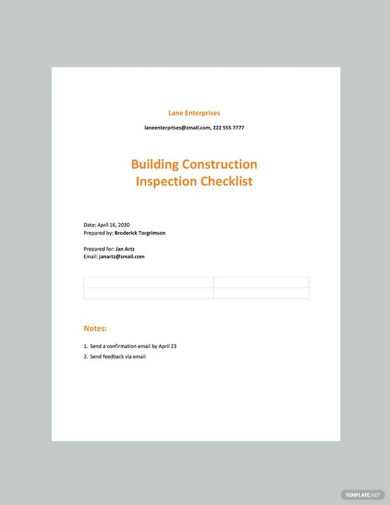
Building Construction Inspection Checklist
download now -

Building Construction Quality Checklist
download now -
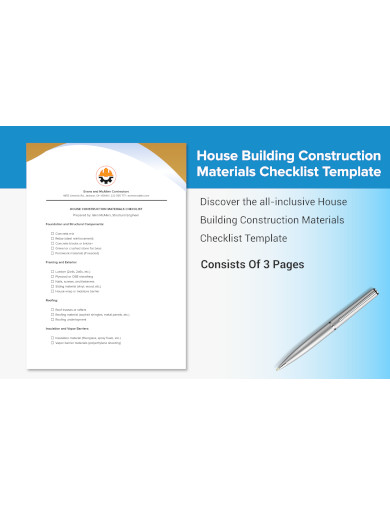
House Building Construction Materials Checklist
download now -
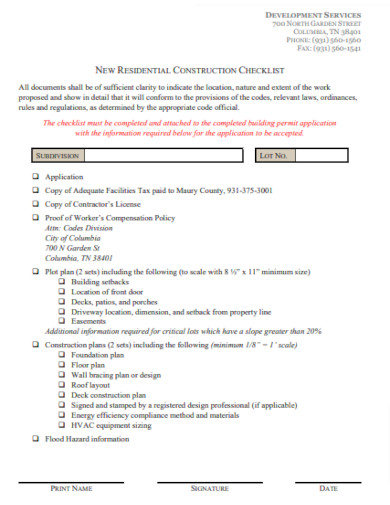
Editable Building Construction Checklist
download now -
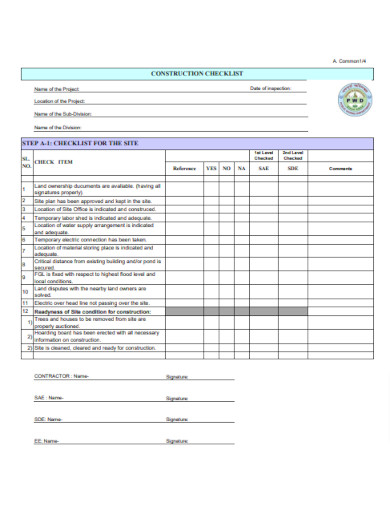
Building Construction Project Checklist
download now -
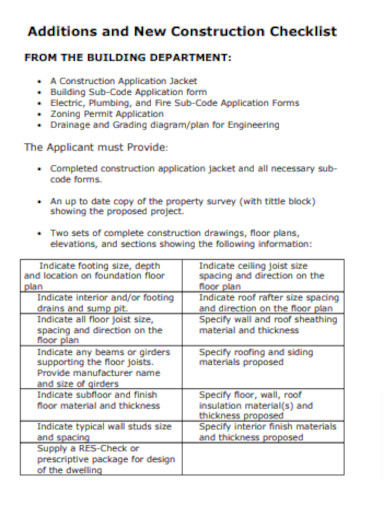
Building Construction New Checklist
download now -
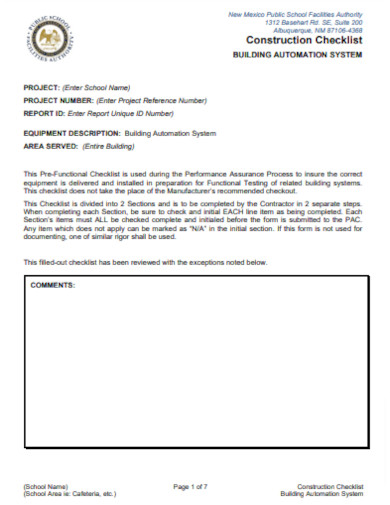
Simple Building Construction Checklist
download now -
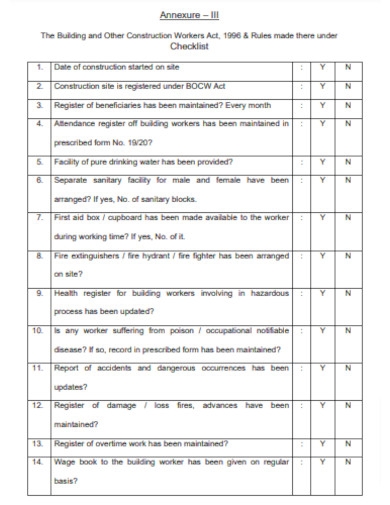
Building Construction Workers Checklist
download now -
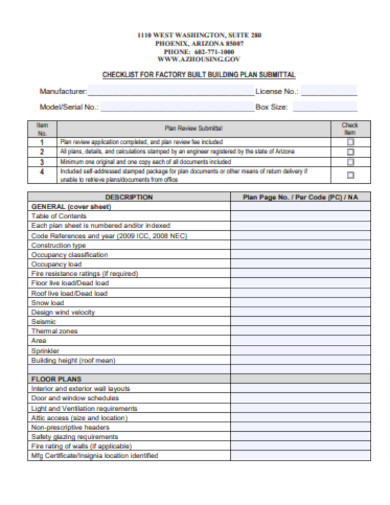
Building Construction Plan Checklist
download now -
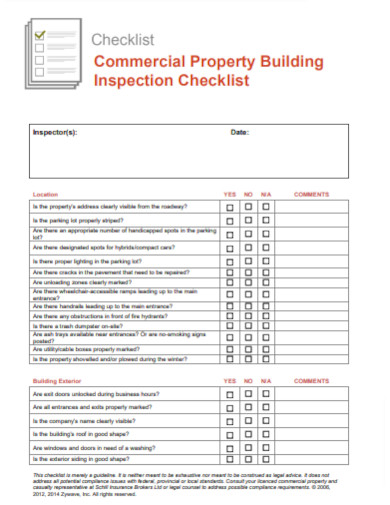
Building Construction Commercial Property Checklist
download now -
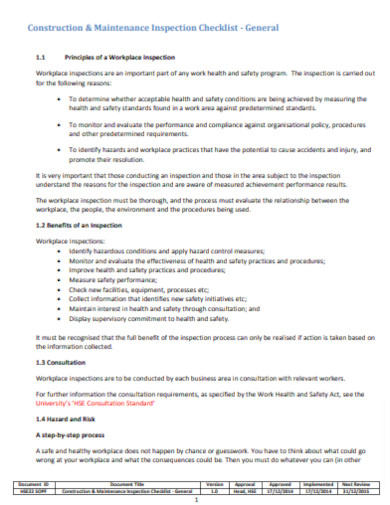
Building Construction Maintenance Checklist
download now -
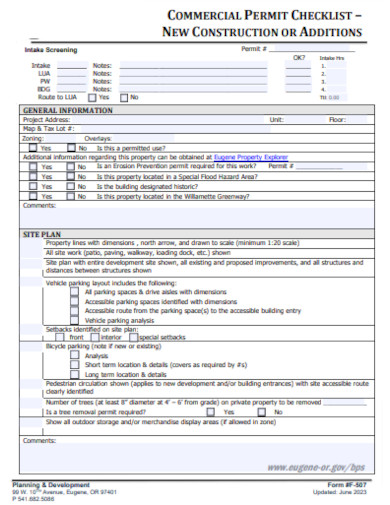
Building Construction Commercial Checklist
download now -
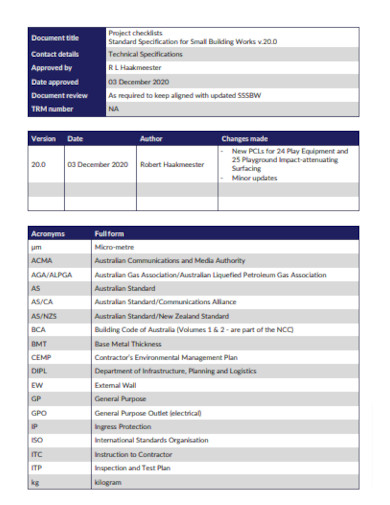
Building Construction Industry Checklist
download now -
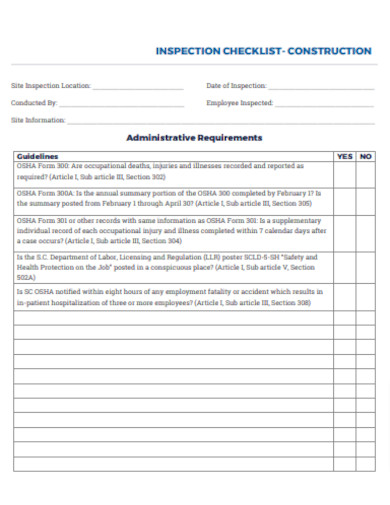
Building Inspection Checklist Construction
download now -
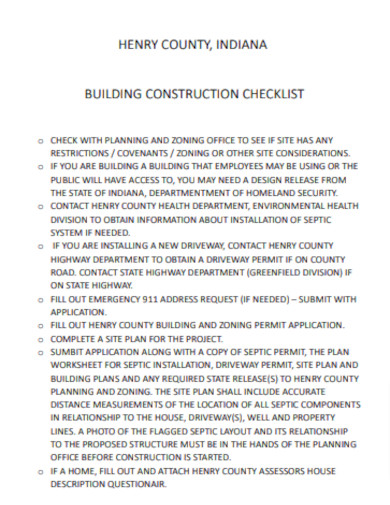
Sample Building Construction Checklist
download now -
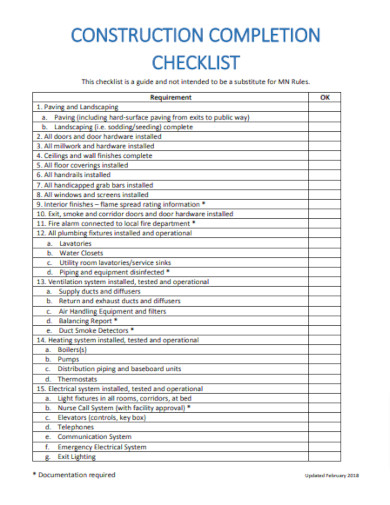
Building Construction Completion Checklist
download now -
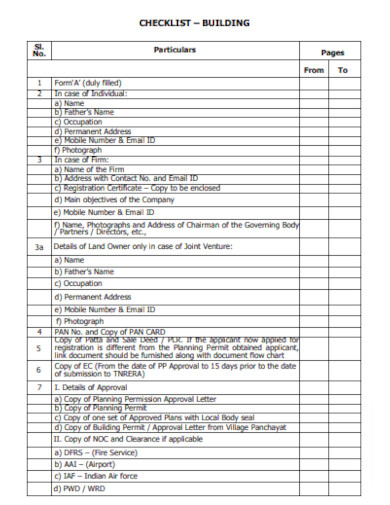
Building Construction Checklist Outline
download now -
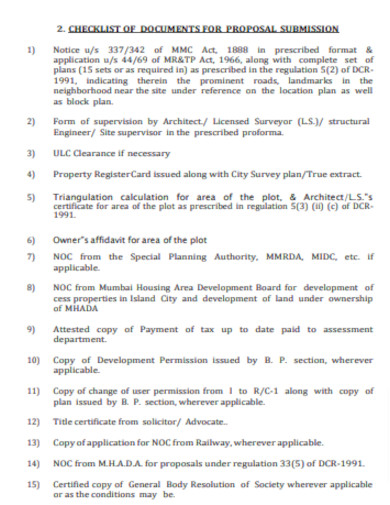
Building Construction Proposal Checklist
download now -
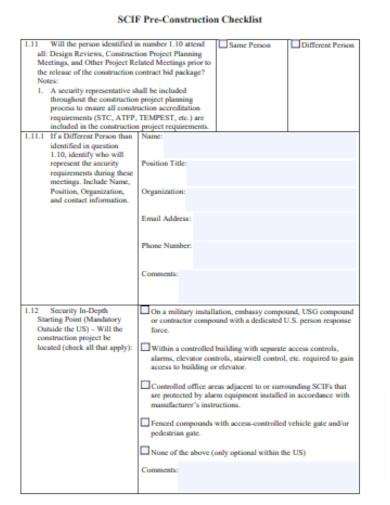
Building Pre-Construction Checklist
download now -
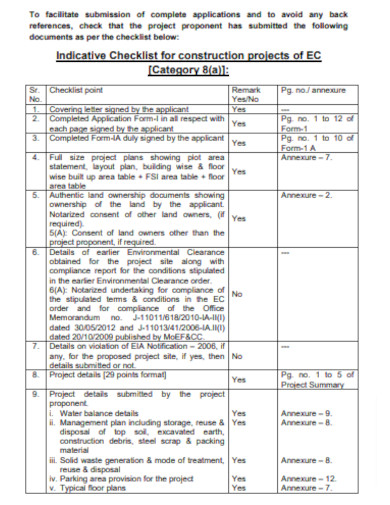
Building Construction Indicative Checklist
download now -
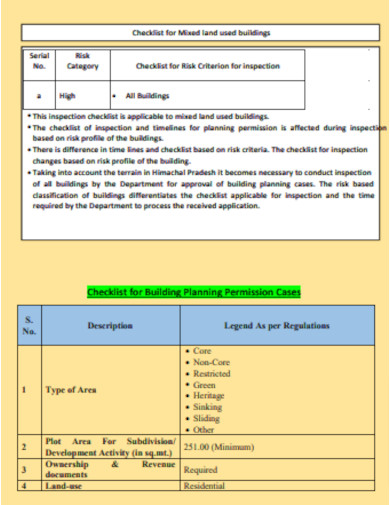
Approval Building Plan Construction Checklist
download now -
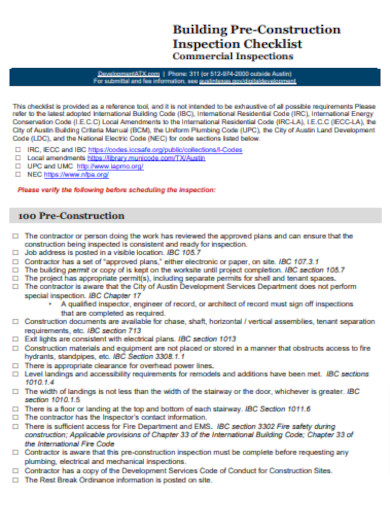
Building Pre-Construction Inspection Checklist
download now -
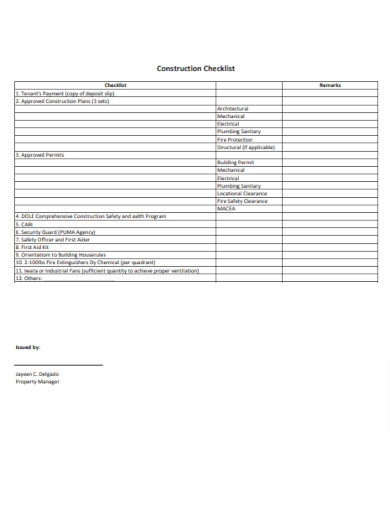
Printable Building Construction Checklist
download now -
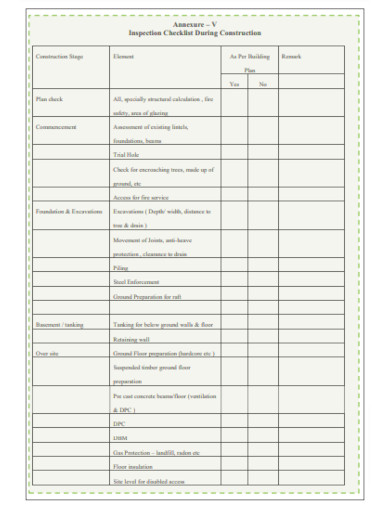
Building Construction Checklist Layout
download now -

Building Construction Supervisors Checklist
download now -
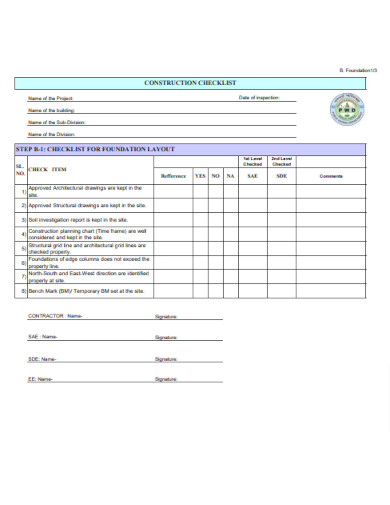
Building Construction Checklist Format
download now
FREE Building Construction Checklist s to Download
25+ SAMPLE Building Construction Checklist
Understanding the Preliminaries
Selecting the Right Team
Design Phase
Budgeting and Financing
Groundwork and Foundations
Structural Integrity and Framework
Roofing and External Works
Interior Design and Detailing
Electrical and Plumbing Systems
Incorporating Technology
Safety Measures and Protocols
Quality Assurance and Inspections
Legal and Compliance Aspects
Environmental Considerations
Finalizing the Project
Post-Construction Maintenance
Challenges in Building Construction
FAQ’S
Why is a building construction checklist important?
When should the checklist be prepared?
How often should the checklist be reviewed?
Does the checklist guarantee the success of a project?
Can the same checklist be used for different projects?
How detailed should the checklist be?
Does the checklist replace the need for regular site meetings and inspections?
How does the checklist accommodate unforeseen challenges or changes?
In the dynamic world of construction, the adage “failing to plan is planning to fail” holds immutable truth. A meticulous building construction checklist not only streamlines the process but also ensures that every phase meets the zenith of precision and efficiency.
Understanding the Preliminaries
Before even breaking ground, understanding the preliminary requirements is paramount. A site survey, for instance, provides invaluable insights into the topography and soil conditions, facilitating informed decision-making. Moreover, acquiring the necessary permits and licenses is not a mere bureaucratic formality; it’s a testament to the legitimacy and compliance of the project.
Selecting the Right Team
The success of a construction project depends heavily on its human resources plan. When choosing architects and designers, it is important to prioritize their vision, expertise, and proven track record. Contractors, who are like maestros conducting the construction symphony, need to be thoroughly evaluated. Additionally, a skilled project manager serves as the crucial link, effortlessly connecting all the elements. A skilled project manager possesses the ability to navigate the complexities of a construction project, ensuring that all tasks are completed efficiently and on schedule. They are responsible for coordinating the various teams involved, from architects and designers to contractors and subcontractors. Their strong organizational skills and attention to detail enable them to oversee every aspect of the project, from initial planning to final execution.
Ultimately, the success of a construction project relies on the expertise and coordination of its human resources. From architects and designers to contractors and project managers, each role plays a vital part in bringing the vision to life. By carefully selecting and evaluating these individuals, and fostering effective communication and collaboration, a construction project can achieve its full potential.
Design Phase
The design phase is where the envisioned structure begins to take form. Detailed blueprints, while intricate, serve as the project’s roadmap. In today’s ecologically-conscious era, integrating sustainable and green building practices is no longer optional—it’s imperative. Equally important is fostering a feedback-rich environment, enabling refinements that resonate with both the client’s aspirations and practical necessities.
Budgeting and Financing
Financial prudence is the bedrock of any construction endeavor. Estimations should be laser-accurate, encompassing every nuance of cost. In terms of financing, construction loans offer tailored solutions, but understanding their intricacies is crucial. Always allocate funds for contingencies; in the construction realm, the unexpected is a frequent visitor.
Groundwork and Foundations
Every magnificent skyscraper owes its grandeur to the groundwork beneath. Proper site preparation, from clearing to excavation, sets the stage. Laying a robust foundation, be it slab or crawl space, demands attention to detail. Furthermore, implementing drainage solutions and waterproofing measures are not just desirable—they’re indispensable.
Structural Integrity and Framework
The skeleton of the structure, its framework, needs unwavering attention. Material selection impacts both durability and safety. Maintaining an unwavering commitment to quality control during the framing phase eliminates future tribulations. Moreover, periodic inspections offer a dual advantage—ensuring compliance and benchmarking quality.
Roofing and External Works
A building’s roof does more than shield from the elements—it’s a testament to architectural prowess. Climate-centric roofing material choices optimize longevity. Beyond roofing, the realm of external works spans driveways to landscaping, each demanding its own specialized approach and considerations.
Interior Design and Detailing
The interior is where functionality marries aesthetics. Flooring, whether hardwood, tile, or carpet, influences both ambiance and utility. Wall treatments, ranging from sophisticated paints to textured wallpapers, reflect the essence of the space. Fixtures, though often underemphasized, can be the subtle difference between the ordinary and the extraordinary.
Electrical and Plumbing Systems
Beneath the visible splendor of a building lie the intricate electrical and plumbing systems. Crafting efficient electrical layouts ensures safety while optimizing functionality. In plumbing, the challenge lies in achieving seamless functionality while embracing water conservation tenets.
Incorporating Technology
In this digital epoch, technology integration is not a luxury; it’s a requisite. Advanced smart home systems elevate comfort, efficiency, and security. Modern HVAC proposal solutions, when implemented correctly, offer unparalleled climate control while championing energy conservation.
Safety Measures and Protocols
Safety, in construction, is non-negotiable. Implementing comprehensive fire safety protocols, from alarms to escape routes, can be life-saving. Structures must also be fortified against nature’s wrath, be it earthquakes or tempests. Additionally, the safe storage and judicious disposal of construction materials safeguard both human health and the environment.
Quality Assurance and Inspections
Quality assurance is the bulwark against future complications. Regular checks and defined milestones maintain project integrity. Tackling potential issues proactively, rather than reactively, saves both time and resources. Final inspections, conducted with a hawk’s eye, ensure that the finished product stands tall, both literally and metaphorically.
Legal and Compliance Aspects
Navigating the labyrinth of construction regulations requires both acumen and diligence. A thorough grasp of local construction edicts ensures seamless compliance. Moreover, preemptively addressing potential disputes and understanding construction liabilities safeguards against future legal entanglements.
Environmental Considerations
Modern construction transcends brick and mortar—it embraces the environment. Adopting sustainable practices is both an ethical obligation and a strategic imperative. Prioritizing reduced environmental impact materials and integrating renewable energy sources is the hallmark of forward-thinking construction.
Finalizing the Project
The culmination of a construction project is a nuanced process. Post-construction cleanup, while seemingly rudimentary, paves the way for occupancy. Walkthroughs with stakeholders, addressing any lingering concerns, set the stage for a flawless handover.
Post-Construction Maintenance
Once constructed, the narrative shifts to preservation. Establishing and adhering to maintenance schedules ensures the edifice remains in prime condition. Addressing wear and tear proactively, and being open to future renovations, ensures the structure remains both relevant and robust.
Challenges in Building Construction
Building construction is a multifaceted process, and as with any intricate endeavor, it comes with its own set of challenges. These challenges can range from site-specific issues to broader economic and environmental concerns. Here’s a detailed exploration of these challenges:
Site Constraints:
The geographical and topographical peculiarities of a construction site, such as soil type, water table levels, and existing structures, can pose significant hurdles. This requires specialized equipment, materials, or construction techniques.
Regulatory and Permit Issues:
Navigating the complex maze of building codes, zoning laws, and permitting processes can delay construction project timelines and increase costs.
Skilled Labor Shortage:
The construction industry often grapples with a shortage of skilled labor. The deficit can lead to increased labor costs, mistakes, and project delays.
Material Costs and Availability:
Fluctuations in the cost of raw materials, supply chain disruptions, or geopolitical events can spike construction costs or delay deliveries.
Technological Integration:
While technology offers solutions to streamline construction, integrating new tech can be challenging. It requires training, adaptation, and sometimes significant initial investments.
Safety Concerns:
Construction sites are inherently hazardous. Ensuring the safety of workers against accidents, exposure to harmful materials, and long-term health risks is a persistent challenge.
Environmental and Sustainability Issues:
As environmental consciousness grows, constructors face the challenge of building eco-friendly structures while also adhering to stricter environmental regulations.
Financial Constraints:
Budget overruns, unpredictable costs, and securing financing are common challenges, especially for large-scale projects.
Communication Breakdowns:
Construction involves various stakeholders – from architects to subcontractors. Effective communication is crucial, and any breakdown can lead to mistakes and delays.
Weather and Natural Disasters:
Weather conditions, such as heavy rain, extreme temperatures, or natural events like earthquakes, can halt construction activities and damage already completed work.
Cultural and Historical Considerations:
In areas with significant historical or cultural heritage, construction activities might need to respect and preserve certain landmarks or artifacts, often leading to modifications in the plan.
Quality Control:
Ensuring the construction meets the desired quality standards consistently, especially in large projects with various teams involved, can be challenging.
Crisis Management:
Unforeseen crises, from worker strikes to legal disputes, require immediate attention and can divert focus and resources from the primary construction activity.
FAQ’S
Why is a building construction checklist important?
A checklist ensures that all stages of construction are systematically approached. It minimizes errors, ensures compliance with regulations, and acts as a tool for coordination among various stakeholders.
When should the checklist be prepared?
Ideally, the checklist should be prepared during the planning phase of the construction project. This allows stakeholders to anticipate tasks and make necessary preparations in advance.
How often should the checklist be reviewed?
The checklist should be reviewed at multiple stages of the construction process to ensure all tasks are being addressed. Critical phases, like before the commencement, during milestones, and before project handover, are ideal times for review.
Does the checklist guarantee the success of a project?
While a checklist is a valuable tool, it’s not a guaranteed formula for success. A project’s success is determined by its execution, effective communication, resource management, and response to unforeseen challenges, among other factors.
Can the same checklist be used for different projects?
While some core elements remain consistent across projects, it’s essential to tailor the checklist to the specific needs, scale, and requirements of each project.
How detailed should the checklist be?
Detail is pivotal. A more detailed checklist reduces ambiguity, ensures clarity in tasks, and offers a clear direction to all involved parties.
Does the checklist replace the need for regular site meetings and inspections?
No, the checklist is a tool to aid the construction process. Regular site meetings, inspections, and communications are essential to address real-time issues, monitor progress, and ensure quality.
How does the checklist accommodate unforeseen challenges or changes?
A well-prepared checklist will have provisions for contingencies. However, it’s also flexible and can be amended to address unforeseen challenges or scope changes.
A building construction checklist, while a tool, is the embodiment of vision roadmap, planning, and precision. In the orchestration of construction, where each note matters, such a checklist ensures the symphony is both harmonious and enduring.
